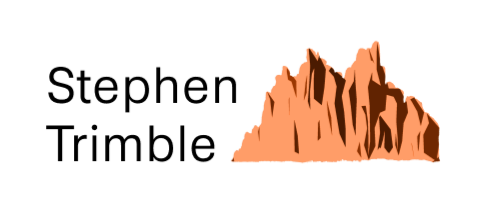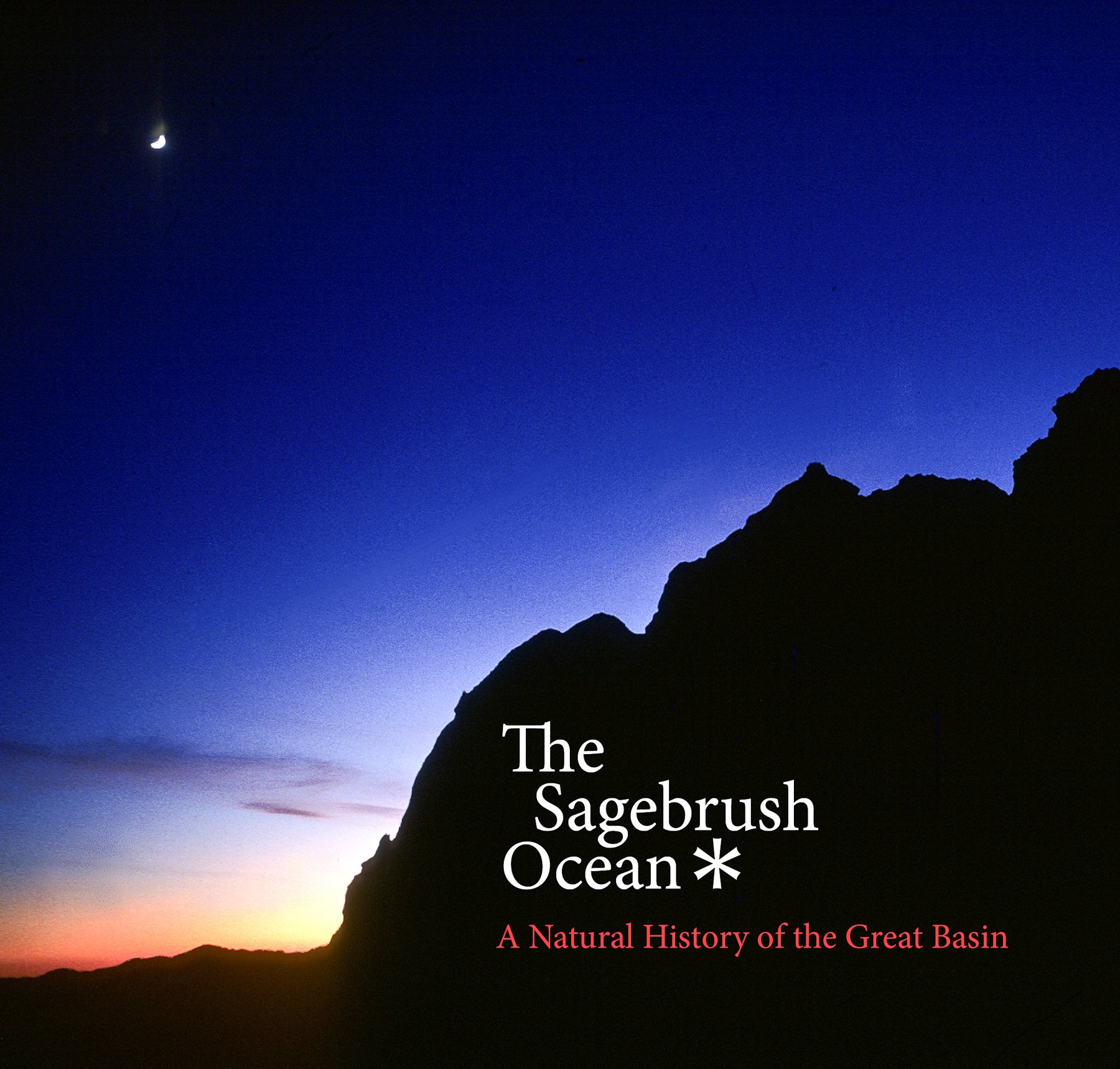The Sagebrush Ocean *
I’ve just finished the first draft of my new and improved text for my Great Basin book, The Sagebrush Ocean. This will be the 35th anniversary edition, an astonishing fact. I’ve spent more than a year bringing these stories of desert animals and plants into the 21st century. Turns out my writing style hasn’t changed much in all these decades, which testifies either to consistency or arrested development. But the original stuff reads well, and so the text hasn’t required drastic rewriting.
Two generations have passed since I completed research for the 1989 publication of this book. That’s a lot of new science, a lot of history. We are learning to adapt to sobering aridification and epic change in the Desert West. The dwindling Great Salt Lake risks turning into a toxic dust bowl. The sagebrush ocean itself has become an endangered landscape. Some recent photographs of Nevada and Utah West Desert basins bear the caption, “the cheatgrass sea.”
The Sagebrush Ocean needs to evolve with our 21st century understanding of this desert—but with a clarifying and sorrowful asterisk next to the title. That endlessly expansive image now rings bittersweet. We now mourn the West’s full-blown ocean of sagebrush redolent with acrid perfume, the essential aroma of this wild desert.
The new edition won’t be published until the end of 2024, at the earliest. We still need to go through all the necessary next steps: peer review, rewriting, copyediting, final draft, design and production. My publisher—as in the original edition—the good folks at the University of Nevada Press, plan a smaller format paperback, easier to take with you on your journeys across the desert. The photographs will mix original pictures with new work. One of my big remaining tasks will be to scan and clean up all those old 35 mm slides. Kodachrome holds up amazingly well, but many years of submissions and slide shows have left a legacy of dust and scratches that require expanding my skills in Lightroom and Photoshop.
As I’ve worked on the book, I’ve taken to distilling some of the big issues into op-eds and essays. This sharpens my thinking, and helps me be more direct and clear when I write the big stories in the longer book. I’m pleased with two recent pieces, and I want to make sure they’re preserved here in the blog and don’t fade away into invisibility on old Facebook and Linked In posts.
First came the introduction to the 2024 Mono Lake Calendar, the annual celebration of this stunning California lake published by the Mono Lake Committee. I last had the chance to write this essay in 1996! Mono Lake is the twin sister of the Great Salt Lake, the beloved endangered lake I see out my window here in Salt Lake City. Mono Lake, just as cherished, just as fragile, just as challenging to manage and preserve, is a little ahead of our Great Salt Lake in resolving its future. But Mono remains imperiled.
Here’s the link to my essay on the past and future at Mono Lake, “Tangled in the Anthropocene.”
The receding shoreline at Mono Lake exposed tufa that precipitated underwater, stranding the mineralized sculptures far inland. To me, the tufa columns feel like time itself, crystallized in fragile, changeable shapes that symbolize a provoking mix of past, present, and future.
Next, I grappled with the dilemma of disappearing sagebrush and expanding piñon-juniper woodland. Cheatgrass drives this story. Instead of that asterisk on the cover, I could rename the book The Cheatgrass Ocean, An Unnatural History of the Great Basin, as the invasive and flammable weed replaces the rich sagebrush community. We’re losing 1.3 million acres of sagebrush every year, in part, because of the advancing woodland. I treasure both communities, and “p-j” is my home landscape. I don’t have an easy solution, but writing this opinion piece helped me to articulate my angst.
Here’s the link to my piece for Writers on the Range, “A Terrible Dilemma Faces the Great Basin.”
Sagebrush, piñon and juniper trees, and the golden expanse of cheatgrass replacing them both. Like everywhere else in the Great Basin, the West Desert of Utah is much more complicated than first impressions would suggest.
We’ll have to decide if that asterisk works on the cover of the new Sagebrush Ocean. But, alas, I’m afraid it’s warranted.
Sagebrush historically formed an ocean from which all other Great Basin places depart. If you picked the right line you could move through the entire length and breadth of the desert from north to south, from west to east, nearly always walking through aromatic gray-green sagebrush. That journey is probably now impossible.
…In all that country one is seldom removed from a suggestion of the sea, though there is nothing harder to come by than water for any purpose. The contours are all billowy; rank on rank of hills rise out of the plain like gray-backed breakers; the sagebrush gives them a sea shimmer.
—Mary Austin, The Lands of the Sun, 1927




